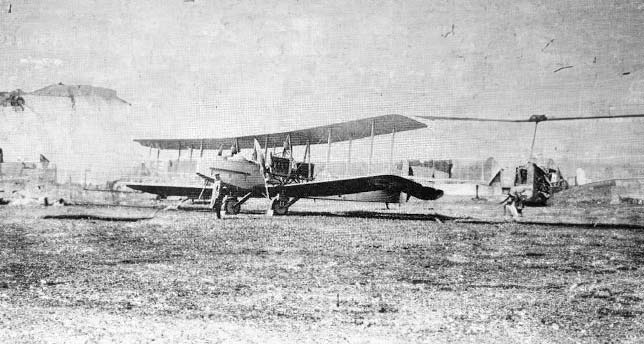Explore the Avro 523 Pike, a 1916 British bomber aircraft, detailing its development history, design, performance, and military use. Understand its role in early aviation history. The Avro 523 Pike, a British bomber aircraft from 1916, represents a significant chapter in early aviation history. This article delves into the Pike’s development, highlighting the historical context and objectives behind its creation. It examines the aircraft’s design, emphasizing its technical aspects, advantages, and limitations. The performance of the Pike, including its engine specifications and capabilities, is analyzed, alongside a comparison with contemporary aircraft. The article concludes with an overview of the Pike’s military usage, detailing its armament, involvement in conflicts, and eventual obsolescence.
The Avro 523 Pike, developed during the tumultuous times of World War I, is a testament to the rapid advancements in military aviation. As nations grappled with the emerging significance of air power, the Pike emerged as Britain’s answer to the growing demand for effective bombers.
History of the Development of the Avro 523 Pike
Context of the Era
In the early 20th century, the world witnessed an unprecedented arms race, with major powers seeking to outdo each other in military capabilities. World War I (1914-1918) marked a pivotal point in this race, particularly in the realm of aerial warfare. Airplanes, initially seen as reconnaissance tools, quickly evolved into strategic weapons.
Need for the Aircraft
Britain, amidst the war, recognized the need for a bomber capable of delivering substantial payloads over considerable distances. The Avro 523 Pike was conceived to meet this requirement, intending to disrupt enemy supply lines and infrastructure.
Objectives and Launch
The primary objective behind the development of the Pike was to create a bomber that could carry heavier payloads than its predecessors and operate at greater ranges. The project was initiated by A.V. Roe and Company (Avro), a prominent British aircraft manufacturer.
First Flight and Absence of NATO Nickname
The Avro 523 Pike took its maiden flight on May 3, 1916. Unlike many later military aircraft, the Pike did not receive a NATO nickname, as the practice of assigning such names only began during the Cold War era.
Design of the Avro 523 Pike
The Pike was a large, twin-engine biplane, showcasing the era’s typical aircraft design characteristics.
Technical Information
- Dimensions: The aircraft had a wingspan of 68 feet (20.73 meters) and a length of 44 feet (13.41 meters).
- Weight: It featured an empty weight of 3,800 pounds (1,724 kilograms) and a maximum takeoff weight of 5,500 pounds (2,495 kilograms).
- Structure: Constructed primarily of wood and fabric, it incorporated a box-like fuselage with clear delineation between the cockpit and bomb bay. Advantages and Drawbacks
One advantage of the Pike was its relatively large bomb load capacity for the era. However, its size made it less maneuverable and more vulnerable to enemy fire. Contributions to Aircraft Development
The design of the Pike, despite its limitations, contributed to the understanding of large aircraft dynamics, influencing subsequent bomber designs.

Performance of the Avro 523 Pike
Engine and Power
The Pike was powered by two Rolls-Royce Eagle engines, each producing 250 horsepower.
Speed, Altitude, and Range
- Maximum Speed: It could reach a top speed of 95 mph (153 km/h).
- Service Ceiling: The aircraft had a service ceiling of 4,500 feet (1,372 meters).
- Range: Its operational range was approximately 500 miles (805 kilometers). Comparison with Competitors
When compared to contemporaries like the German Gotha bombers, the Pike was less efficient in terms of speed and ceiling but had comparable range and payload capabilities.
Military Use and Combat of the Avro 523 Pike
Armament
The Pike was equipped with a variety of bombs, with a total capacity of up to 920 pounds (417 kilograms).
Combat and Operations
While designed for strategic bombing, the Pike saw limited combat use, primarily due to its relatively slow speed and vulnerability to anti-aircraft fire.
Competing Aircrafts and Sales
Competitors included the Gotha G.IV and the Handley Page Type O, both of which outperformed the Pike in several aspects. The Pike was not widely sold to other countries, largely remaining in British service.
Service Life and Replacement
The Avro 523 Pike was eventually phased out, replaced by more advanced bombers like the Handley Page V/1500. It was fully retired from service shortly after the end of World War I.
The Avro 523 Pike, while not the most successful or widely used bomber of World War I, played a crucial role in the evolution of military aviation. Its development underscored the importance of air power in modern warfare and paved the way for more advanced aircraft designs in the years that followed.
Back to the Bombers section.